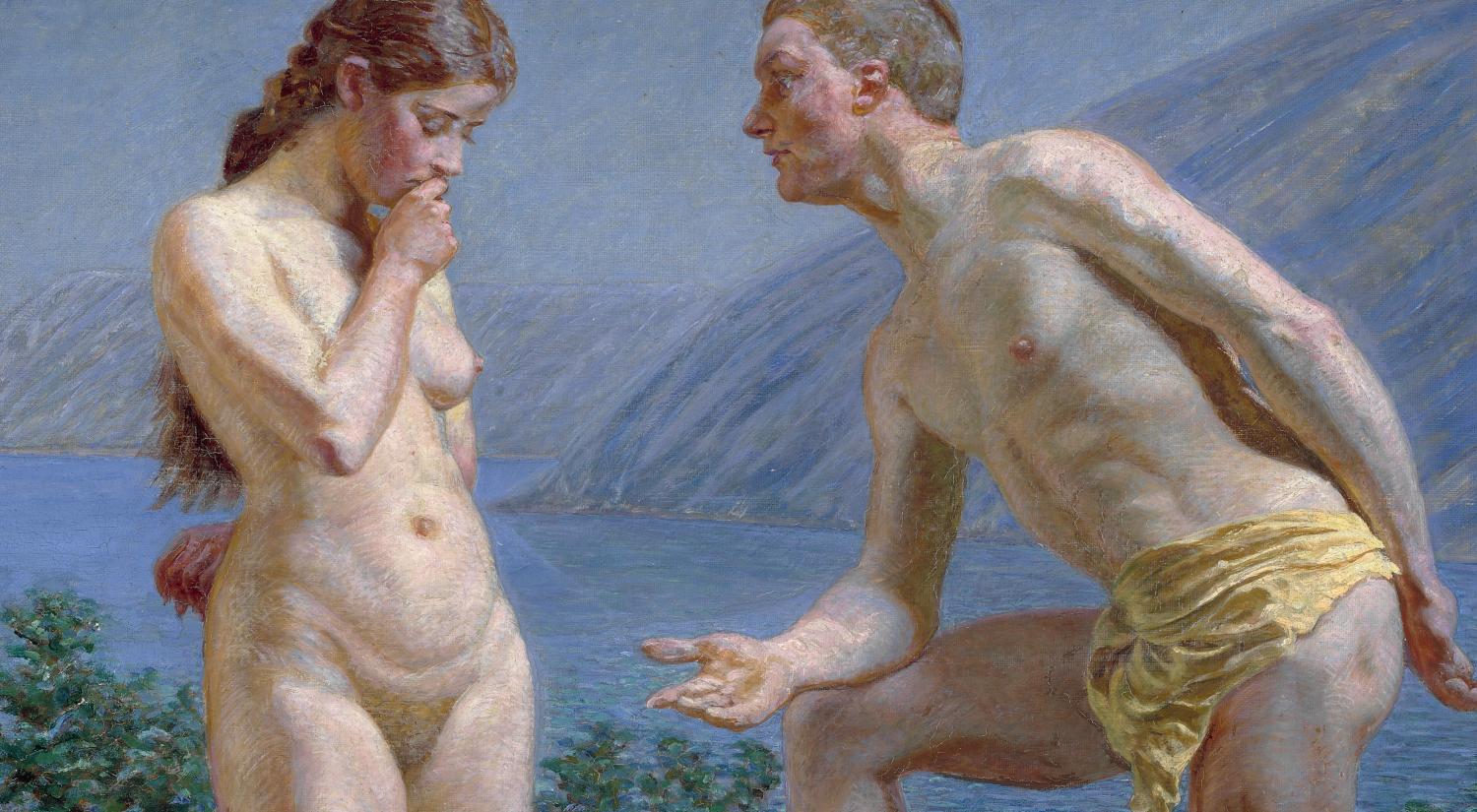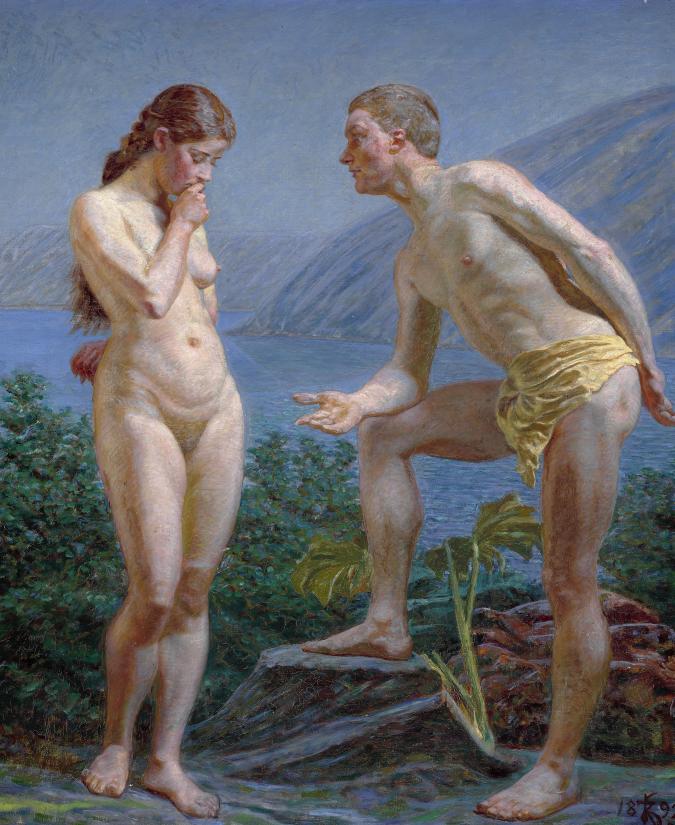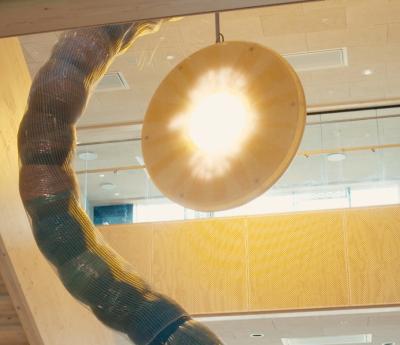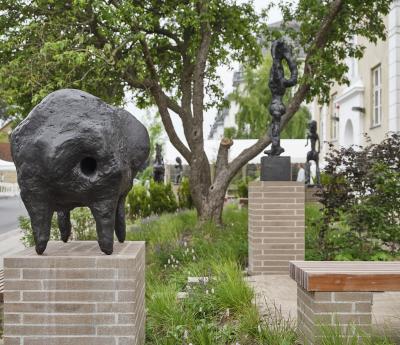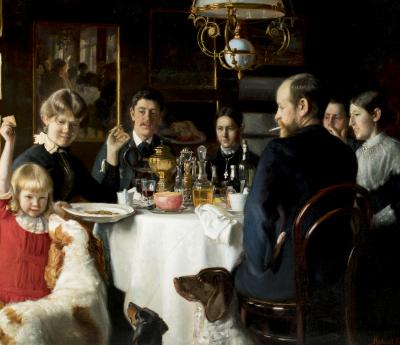Zahrtmann is considered one of the most significant artists of the Modern Breakthrough, both due to this renewal of the historical genre and a use of colour that was intense and modern for its time and because of his role as a mentor and teacher to many Danish artists.
An important addition
Faaborg Museum already owns one of Zahrtmann’s principal works, Adam og Eva i Paradis (Adam and Even in the Garden of Eden) from 1892. That painting was acquired in 1911 as one of the first significant purchases for the museum’s collection. It was hung on in the new building, designed by Carl Petersen, when the museum opened in 1915. Today, it is on display in the main gallery. Adam og Eva was created concurrently with Adam og Eva i Paradis.
Zahrtmann’s main genres were Italian street life, portraits, landscapes and historical images, the latter genre particularly dedicated to Leonora Christine. Adam og Eva is one of the few exceptions. It further stands out in Zahrtmann’s oeuvre because he mainly painted male nudes and rarely female ones. On several occasions, this came close to scandalizing Zahrtmann during his lifetime. Adam og Eva shows Adam standing in a relaxed posture, speaking to Eve. Adam is partially clad, while Eve is shown naked and deep in thought, her gaze downcast. The painting features Zahrtmanns characteristically intense colours.
Faaborg Museum’s collection only includes six paintings by Zahrtmann, and Adam og Eva is thus an important addition to the museum’s ability to tell the story of Zahrtmann and his influence on the so-called Funen Painters.
Zahrtmann and the Funen Painters
Zahrtmann played a crucial role in the establishment of the artists’ circle Fynboerne, the Funen Painters. During the late 1880s, Fynboerne established an art colony in the city of Faaborg on the Danish island of Funen. The group included Fritz Syberg and Peter Hansen, who completed their artistic training under Zahrtmann’s tutelage at Kunstnernes Studieskole (The Artists’ Study School) in Copenhagen before returning to their native city. The school was also attended by Johannes Larsen, Poul S. Christiansen and Nicolaus Lützhøft, among others.
Zahrtmann was a key figure, both by virtue of his role as a teacher and due to his years-long work in Italy, and his artistic inspiration is a clearly discernible influence in the works of the Funen Painters.
About Kristian Zahrtmann
Kristian Zahrtmann (1843–1917) was born on the Danish island of Bornholm. He belonged to the same generation of artists as P. S. Krøyer and Th. Philipsen, who were associated with naturalism and the Modern Breakthrough. Zahrtmann trained at the Royal Danish Academy of Fine Arts, where his teachers included Vilhelm Marstrand and Frederik Vermehren. He had a significant influence on several generations of artists, both as a teacher and as head of Kunstnernes Studieskole from 1885 to 1908. The school was widely referred to as ‘Zahrtmann’s School’.
